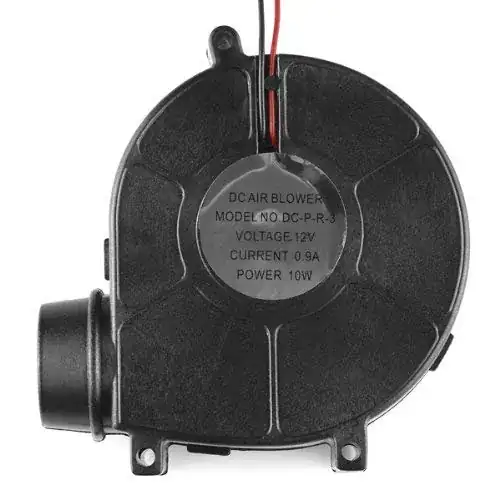I am planning to add a 12V DC blower (https://www.amazon.in/gp/product/B00LPUXVWS) to intake manifold of my Yamaha FZS FI 149CC engine. I thought it could work more like a supercharger, except it will be powered by battery instead of engine. Will this be feasible? What are the complications associated with it?
3 Answers
I thought it could work more like a supercharger, except it will be powered by battery instead of engine.
This isn't the first time someone has thought of "electric" supercharging.
There's nothing wrong with having electrical power source per se (the leaf-blower Monza comes to mind), but you're going to need way more than 10 W worth of power (which is what the product you linked is rated for).
I urge you to read through this article on the Twin-Turbo Zet for more details on why this idea won't work with the fan you posted.
In a nutshell, it highlights the fact that the engine requires a tremendous amount of air in comparison to what the fan can provide, so you're going to have to use orders of magnitude more fans, which will consume orders of magnitude more electrical power.
Oh, and all this is just to satisfy the engine's basic pre-boost requirement. To add boost, you're going to have to add even more air flow (and subsequently supply more power).
- 39,276
- 50
- 151
- 294
Using that kind of blowers as turbochargers is generally proved worthless. The main drawback is these devices are not capable of creating any significant pressure, especially considering internal combustion engine's air flow rate.
As @HandyHowie already mentioned one could even experience air flow restriction. Some quick maths: consider 1 cylinder 2 stroke engine with 150cc piston displacement at 3000 RPM. That results in roughly 150*3000*0.000001 = 0.45 m^3/min of air flow rate. Now the blower you've linked is capable of 16 CFM flow rate, which is about the same 0.45 m^3/min. So best case scenario: you don't get any extra power below 3000 RPM and lose power above that rev.
- 336
- 1
- 8
This will not cause any increase in horsepower. Likely a decrease in horsepower due to restriction.
A unit like this simply does not flow enough air to make a difference. Think of it this way, your device needs to be able to flow more air (at higher than atmospheric pressure) than the intake stroke of the engine would flow typically.
If it cannot do this, you will not see an increase, and it may even restrict air flow causing a decrease.
Not only that, but if you do not modify the fuel injection map on your ECU, it will not inject any more fuel into the engine so power will not increase. Max power is based on how much fuel you can burn in the engine, if you aren't putting any more fuel in, no matter how much air in, there will be no increase.
For a small engine like this, you can probably find a very small turbocharger to use, get a skilled welder to create a manifold, then get a small ECU (MicroSquirt works well for bikes) and tune it for the increased manifold pressure, you may need larger injectors, or to increase fuel pressure also.
If were to do this, you likely would not need an intercooler, as you would likely not be compressing the air that much, if you were to go above ~5PSI you would want an intercooler.
- 696
- 3
- 13
